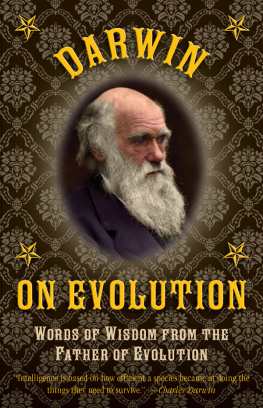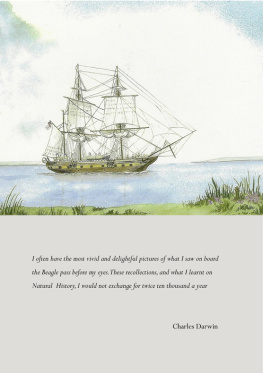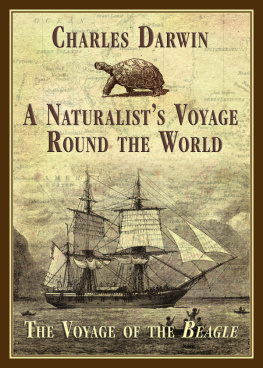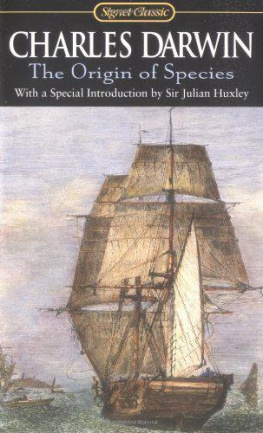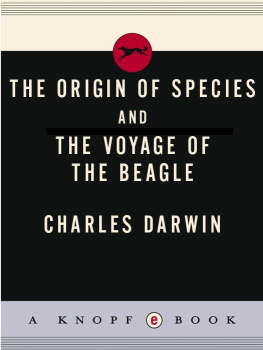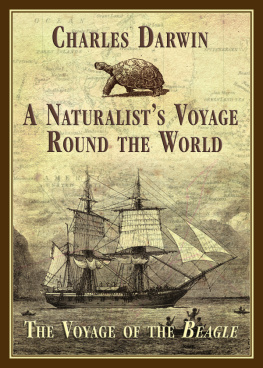First published 1992 by Pickering & Chatto (Publishers) Limited
Published 2016 by Routledge
2 Park Square, Milton Park, Abingdon, Oxon OX14 4RN
Routledge is an imprint of the Taylor & Francis Group, an informa business
Copyright Taylor & Francis
All rights reserved. No part of this book may be reprinted or reproduced or utilised in any form or by any electronic, mechanical, or other means, now known or hereafter invented, including photocopying and recording, or in any information storage or retrieval system, without permission in writing from the publishers.
Notice:
Product or corporate names may be trademarks or registered trademarks, and are used only for identification and explanation without intent to infringe.
Darwin, Charles
The works of Charles Darwin
1. Evolution
I. Title II. Barrett, Paul H. 575 QH366
ISBN 13: 978-1-85196-203-7 (hbk)
CHAPTER XIV
CENTRAL CHILE
Valparaiso Excursion to base of Andes Structure of land Ascend Bell of Quillota Shattered masses of greenstone Immense valleys Mines State of miners Santiago Hot baths of Cauquenes Gold mines Grinding mills Perforated stones Habits of puma El turco and tapacolo Humming-birds.
July 23d, 1834. The Beagle anchored late at night in the bay of Valparaiso, the chief seaport of Chile. When morning came, every thing appeared delightful. After Tierra del Fuego, the climate felt quite delicious the atmosphere so dry, and the heavens so clear and blue, with the sun shining brightly, that all nature seemed sparkling with life. The view from the anchorage is very pretty. The town is built at the very foot of a range of hills, about 1600 feet high, and rather steep. From its position, it consists of one long, straggling street, which runs parallel to the beach, and wherever a ravine comes down, the houses are piled up on each side of it. The rounded hills, being only partially protected by a very scanty vegetation, are worn into numberless little gullies, which expose a singularly bright red soil. From this cause, and from the low whitewashed houses with tile roofs, the view reminded me of St Cruz in Teneriffe. In a north-easterly direction there are some fine glimpses of the Andes: but these mountains appear much grander when viewed from the neighbouring hills; the great distance at which they are situated can then more readily be perceived. The volcano of Aconcagua is particularly magnificent. This huge and irregularly conical mass has an elevation greater than that of Chimborazo; for, from measurements made by the officers in the Beagle, its height is no less than 23,000 feet. The Cordillera, however, viewed from / this point, owe the greater part of their beauty to the atmosphere through which they are seen. When the sun was setting in the Pacific, it was admirable to watch how clearly their rugged dunes could be distinguished, yet how varied and how delicate were the shades of their colour.
I had the good fortune to find living here Mr Richard Corfield, an old schoolfellow and friend, to whose hospitality and kindness I was greatly indebted, in having afforded me a most pleasant residence during the Beagles stay in Chile. The immediate neighbourhood of Valparaiso is not very productive to the naturalist. The surrounding hills consist of a granitic formation, which sometimes assumes the character of gneiss and sometimes of granite. Their summits are flat-topped and their flanks rounded. I have before stated, that forests cover that side of the Cordillera which fronts the prevailing wind. Here, during the summer, which forms the longer portion of the year, the winds blow steadily from the southward, and a little off shore, so that rain never falls: during the three winter months it is however sufficiently abundant. The vegetation in consequence is very scanty. Except in some deep valleys, trees nowhere occur, and only a little grass and a few low bushes are scattered over the less steep parts of the hills. When we reflect that, at the distance of 350 miles to the southward, this side of the Andes is completely hidden by one impenetrable forest, the contrast is very remarkable.
I took several long walks while collecting objects of natural history. The country is pleasant for exercise. There are many very beautiful flowers, and as in most other dry climates, the plants and shrubs possess strong and peculiar odours; even mens clothes by brushing through them became scented. I did not yet cease from wonder, at finding each succeeding day as fine as the foregoing. What a difference does climate make in the enjoyment of life! How opposite are the sensations when viewing black mountains half-enveloped in clouds and seeing another range through the light / blue haze of a fine day! The one for a time may be very sublime; the other is all gaiety and happy life.
August 14th. I set out on a riding excursion, for the purpose of geologizing the basal parts of the Andes, which alone at this time of the year were not shut up by the winter snow. Our first days ride was northward along the sea-coast. After dark we reached the Hacienda of Quintero, the estate which formerly belonged to Lord Cochrane. My object in coming here was to see the great beds of shells, which are elevated some yards above the level of the sea. They nearly all consist of one species of Erycina; and these shells at the present day live together in great numbers, on the sandy flats. So wonderfully numerous are those forming the beds, that for years they have been quarried, and burnt for the lime, with which the large town of Valparaiso is supplied. As any change of level, even in this neighbourhood, has often been disputed, I may add, that I saw dead barnacles adhering to points of solid rock which were now so much elevated, that even during gales of wind they would scarcely be wetted by the spray.
August 15th. We returned towards the valley of Quillota. The country was exceedingly pleasant; just such as poets would call pastoral: green open lawns, separated by small valleys with rivulets, and the cottages, we will suppose of the shepherds, scattered on the hill-sides. We were obliged to cross the ridge of the Chilecauquen. At its base there were many fine evergreen forest-trees, but these only flourished in the ravines, where there was running water. Any person who had seen only the country near Valparaiso, would never have imagined that there had been such picturesque spots in Chile. As soon as we reached the brow of the Sierra, the valley of Quillota was immediately under our feet. The prospect was one of remarkable artificial luxuriance. The valley is very broad and quite flat, and is thus easily irrigated in all parts. The little square gardens are crowded with orange and olive trees, and every sort of vegetable. On each side huge bare mountains rise, and this from the contrast renders the patchwork / valley the more pleasing. Whoever called Valparaiso the Valley of Paradise, must have been thinking of Quillota. We crossed over to the Hacienda de San Isidoro, situated at the very foot of the Bell mountain.
Chile, as may be seen in the maps, is a narrow strip of land between the Cordillera and the Pacific; and this strip is itself traversed by several mountain-lines, which in this part run parallel to the great range. Between these outer lines, and the main Cordillera, a succession of level basins, generally opening into each other by narrow passages, extend far to the southward. In these the principal towns are situated, as San Felipe, Santiago, S. Fernando. These basins or plains, together with the transverse flat valleys (like that of Quillota) which connect them with the coast, I have little doubt, are the bottoms of ancient inlets and deep bays, such as at the present day intersect every part of Tierra del Fuego, and the west coast of Patagonia. Chile must formerly have resembled the latter country, in the configuration of its land and water. This resemblance was occasionally seen with great force, when a level fog-bank covered, as with a mantle, all the lower parts of the country: the white vapour curling into the ravines, beautifully represented little coves and bays; and here and there a solitary hillock peeping up, showed that it had formerly stood there as an islet. The contrast of these flat valleys and basins with the irregular mountains, gave the scenery a character which to me was novel and very interesting.



